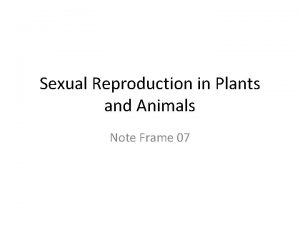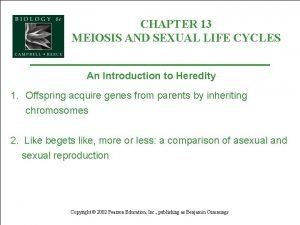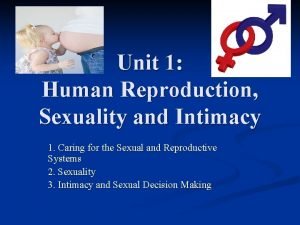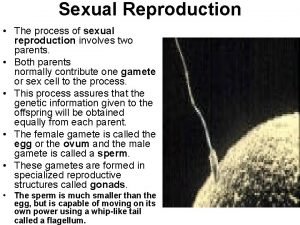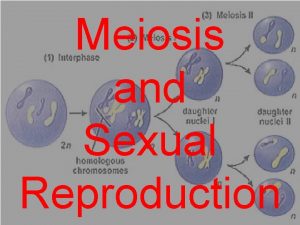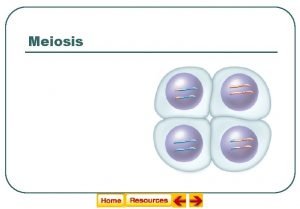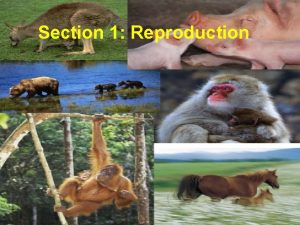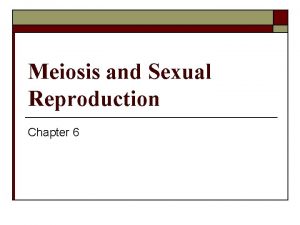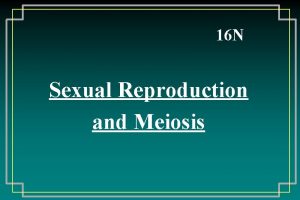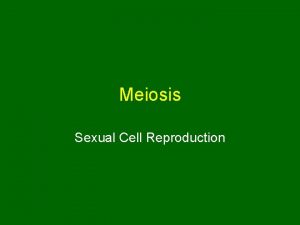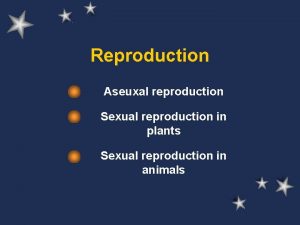GENETIC VARIATION Genetic Variation Meiosis and sexual reproduction





















- Slides: 21

GENETIC VARIATION

Genetic Variation • Meiosis and sexual reproduction ensure that variation occurs in individuals within a population/species.

Genetic Variation • Meiosis and sexual reproduction ensure that variation occurs in individuals within a population/species. • Individuals produced by sexual reproduction are different from one another and their parents- this is because mixing of genetic material occurs during: -

Genetic Variation • Meiosis and sexual reproduction ensure that variation occurs in individuals within a population/species. • Individuals produced by sexual reproduction are different from one another and their parents- this is because mixing of genetic material occurs during: -the production of gametes in meiosis

Genetic Variation • Meiosis and sexual reproduction ensure that variation occurs in individuals within a population/species. • Individuals produced by sexual reproduction are different from one another and their parents- this is because mixing of genetic material occurs during: -the production of gametes in meiosis -Fertilisation when the zygote receives half its chromosomes from the male and half from the female.

Meiosis ‘juggling the genes’ • Variation between closely related individuals results from the random way in which chromosomes (and therefore their alleles) line up in meiosis.

Meiosis ‘juggling the genes’ • Variation between closely related individuals results from the random way in which chromosomes (and therefore their alleles) line up in meiosis. • When chromosomes separate, it is chance which chromosome/alleles will come together in a gamete (eg sperm or egg)

Meiosis ‘juggling the genes’

Fertilisation • Occurs when a sperm fuses with an egg – it is a chance event as to which sperm fertilises the egg (both have a unique combo of alleles)

Identical Twins • Develop from the same fertilised egg, so the DNA in their cells is the same.

Identical Twins • Develop from the same fertilised egg, so the DNA in their cells is the same. • Differences between identical twins occur from ageing processes, and environmental events.

Sex determination • Sex is determined by the X and Y chromosomes

Sex determination • Sex is determined by the X and Y chromosomes • Males have XY and females are XX

Sex determination • Sex is determined by the X and Y chromosomes • Males have XY and females are XX • Genes on the sex chromosomes control the manufacture of sex hormones, which bring about secondary sexual characteristics such as breast development (females) and the growth of facial hair (males)

Sex determination • Sex is determined by the X and Y chromosomes • Males have XY and females are XX • Genes on the sex chromosomes control the manufacture of sex hormones, which bring about secondary sexual characteristics such as breast development (females) and the growth of facial hair (males) • The X chromosome is much larger than the Y – therefore contains more genes.

Sex determination • Sex is determined by the X and Y chromosomes • Males have XY and females are XX • Genes on the sex chromosomes control the manufacture of sex hormones, which bring about secondary sexual characteristics such as breast development (females) and the growth of facial hair (males) • The X chromosome is much larger than the Y – therefore contains more genes. • Each gamete only receives only one sex chromosome. - From a male, half the sperm receive an X chromosome and half receive a Y chromosome -

Sex determination • Sex is determined by the X and Y chromosomes • Males have XY and females are XX • Genes on the sex chromosomes control the manufacture of sex • • - hormones, which bring about secondary sexual characteristics such as breast development (females) and the growth of facial hair (males) The X chromosome is much larger than the Y – therefore contains more genes. Each gamete only receives only one sex chromosome. From a male, half the sperm receive an X chromosome and half receive a Y chromosome Since females have only X chromosomes, all eggs have one X.

Sex determination • Whether a child is male or female is determined the moment of fertilisation by the sperm.

Sex determination • Whether a child is male or female is determined the moment of fertilisation by the sperm. • If an X sperm fertilises the egg, the offspring will be female

Sex determination • Whether a child is male or female is determined the moment of fertilisation by the sperm. • If an X sperm fertilises the egg, the offspring will be female • If a Y sperm fertilises the egg, the offspring will be male

Sex determination • Whether a child is male or female is determined the moment of fertilisation by the sperm. • If an X sperm fertilises the egg, the offspring will be female • If a Y sperm fertilises the egg, the offspring will be male X XX XX Y XY XY • 50% chance either a male or female will be born every time.
 Asexualk
Asexualk Section 1 meiosis
Section 1 meiosis Chapter 10 section 3 gene linkage and polyploidy
Chapter 10 section 3 gene linkage and polyploidy Venn diagram of sexual and asexual reproduction
Venn diagram of sexual and asexual reproduction Sexual and asexual reproduction in animals venn diagram
Sexual and asexual reproduction in animals venn diagram Meiosis and genetic variation answer key
Meiosis and genetic variation answer key Mendelian genetics
Mendelian genetics Two types of reproduction
Two types of reproduction Asexual and sexual reproduction venn diagram
Asexual and sexual reproduction venn diagram Asexual vs sexual reproduction venn diagram
Asexual vs sexual reproduction venn diagram Chapter 10 sexual reproduction and genetics
Chapter 10 sexual reproduction and genetics Is mitosis asexual
Is mitosis asexual Sexual reproduction
Sexual reproduction Asexual and sexual reproduction difference
Asexual and sexual reproduction difference Parthenogenesis in mammals
Parthenogenesis in mammals Organisms that reproduce asexually
Organisms that reproduce asexually Metaphase ii
Metaphase ii Chapter 13 meiosis and sexual life cycles
Chapter 13 meiosis and sexual life cycles A sexual reproduction in humans
A sexual reproduction in humans Sexual reproduction
Sexual reproduction Definition of reproduction
Definition of reproduction Define sexual reproduction
Define sexual reproduction













